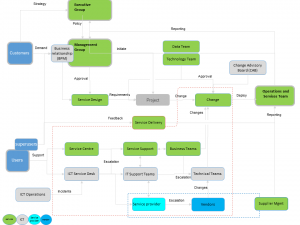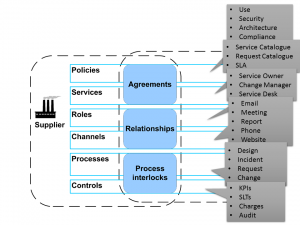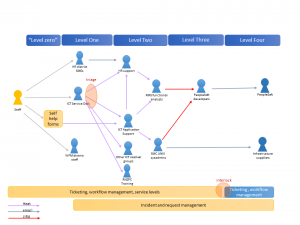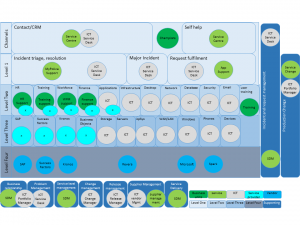IT Operating Model
When there is talk about an "operating model" do you nod wisely and wonder WTF they are actually talking about? I did for years. In my consulting work I got my head around what it actually is. Here are some ideas.

Interestingly there appears not to be any standard for a meta-model: a model of an Operating Model. When the Wikipedia entry for "Industry standard operating models" points you to ITIL, you know you're in trouble.
One article I often point to is a blog post by Troy DuMoulin over at Pink Elpehant where he lays out a great picture of a process view of an IT Operating Model.
In a comment on this blog from Mark Smalley summarising his thoughts on an IT Operating Model. He said
- We often focus on the important process part of an IT Operating Model but a broader definition is useful, leading me to the following components:
- Core work IT processes that create and deliver value to stakeholders
- Information and information systems to execute and support these core IT processes (it is assumed that there is no other “equipment and technology” than “information systems”)
- Other processes to support the core IT processes
- Suppliers and supplier agreements to support the processes
- People to do the work
- Organization structure, decision rights, incentives and accountabilities and culture that ‘govern’, motivate and support the people
- Locations, buildings and ambiance
I use a simpler model because we are simple folk in New Zealand:
- The value stream modelled as entities (team, function, role...) and the flows between them. For example:

I will in future use IT4IT as my model
- Perhaps a process model: classic BPM. e.g. Troy's picture

- An engagement model for suppliers. Here is my "Hono" model

- A more detailed support model showing the entities at levels 0 thru 3 for incidents and requests.


- I'd like to do an information model one day. I have been thinking of using OBASHI.
Do you have a preferred meta-model: a model of an Operating Model?


 Made in New Zealand
Made in New Zealand 
